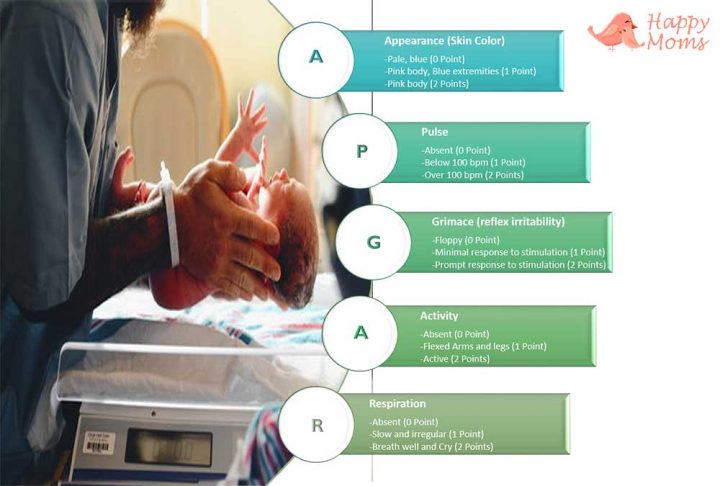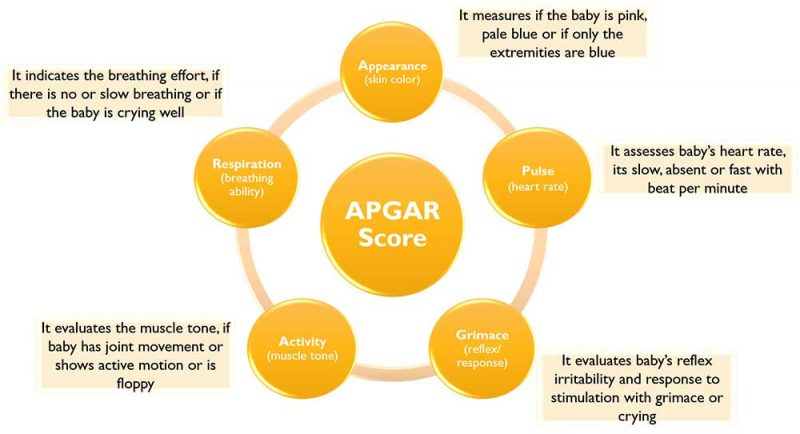
Apgar score is a simple method of quickly assessing the health and vital signs of a newborn baby. It is estimated at 1 minute and 5 minutes at birth. After each period is over, the baby is given his/her first tests by a nurse or a doctor called Apgars.
This lets a doctor determine the general condition of your child at birth. This test checks a baby’s heart rate, muscle tone, and other signs to see if any special medical or emergency care is required.
Apgar stands for Appearance, Pulse, Grimace, Activity, Respiration.
- Appearance (skin color): It measures the skins color if the baby is pink, pale blue or if only the extremities are blue
- Pulse (heart rate): It assesses baby’s heart rate; slow, absent or fast with beat per minute
- Grimace (response/reflexes): It evaluates baby’s reflex irritability and response to stimulation with grimace or crying
- Activity (muscle tone): It evaluates the muscle tone, if baby has joint movement or shows active motion or is floppy
- Respiration (breathing ability): It indicates the breathing effort, if there is no or slow breathing or if the baby is crying well

Apgar Evaluation:
These five factors are used to monitor the health of an infant. Each is graded on a 0 to 2 scale with 2 as the best result. The scores are evaluated as follows:
Appearance (Skin Color)
- Pale, blue (0 Point)
- Pink body, Blue extremities (1 Point)
- Pink body (2 Points)
Pulse
- Absent (0 Point)
- Below 100 bpm (1 Point)
- Over 100 bpm (2 Points)
Grimace (reflex irritability)
- Floppy (0 Point)
- Minimal response to stimulation (1 Point)
- Prompt response to stimulation (2 Points)
Activity
- Absent (0 Point)
- Flexed Arms and legs (1 Point)
- Active (2 Points)
Respiration
- Absent (0 Point)
- Slow and irregular (1 Point)
- Breath well and Cry (2 Points)
All five factors contribute to the Apgar score and are added up by on-duty doctors or nurses. Scores range from 10 to 0. Ten is the highest possible score, but few children get it. It’s because the hands and feet of most infants remain blue before they warm up.
The test is repeated at 5 minutes after birth. If the score of a baby was originally low or did not change or if there were any complications, doctors and nurses will provide necessary medical attention. The baby is then constantly monitored.
Low Apgar Score
If after 5 minutes the score is very low, the nurses or doctor will reassess the score within 10 minutes. Physicians expect certain babies to get lower Apgar ratings due to:
- premature babies
- babies born via cesarean delivery
- babies who had complicated deliveries
- born after high-risk pregnancy
This article is for informational purposes only, and is not meant to offer medical advice



